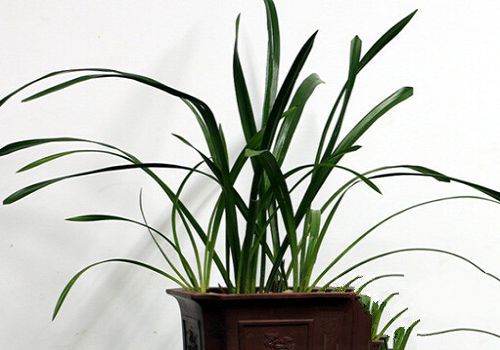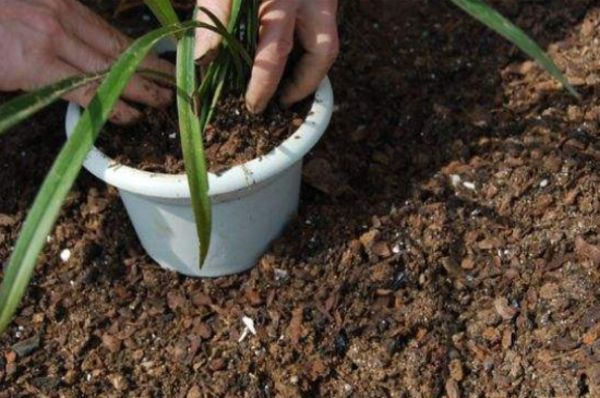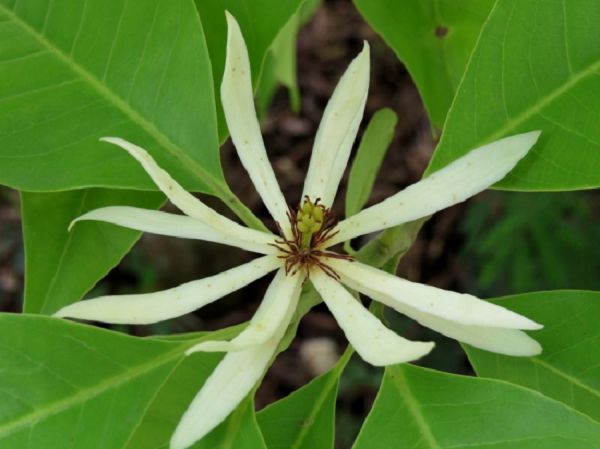A complete Collection of planting methods of Orchid

Orchids are loved by many of us. How to raise orchids is an issue we are all very concerned about. Next, let's take a look at it:
The planting method of orchids:
1. Basin soil requirements:
The neutral and acidic soil with a large amount of decaying, loose and good drainage is the best, and the PH value is generally about 5.5 to 6.5. Sichuan mostly uses Emei fairy soil and "Xinghong brand" refined orchid plant materials, and more commonly uses "bamboo root mud" and rotten leaf soil under mountain broad-leaved forests to cultivate orchids.
2. Place of placement:
Orchids can be cultivated outdoors and on the balcony in spring, summer and autumn, requiring good ventilation, moist air and no environmental pollution. Of course, it is good to be close to the pond and riverside, at least trees or bamboo forests and sunshade nets should be placed to reduce the sun exposure and lower the temperature. The orchid basin had better be put on the wooden frame (or steel frame). If you put it on the ground with bricks, the home balcony can also use tin to make small water storage pads on bricks to increase humidity.
3. Proper shading:
Orchids are mostly semi-shady plants, and most species are afraid of direct sunlight and need proper shade. Orchids can go to the net and open windows in the first and middle of April to promote their growth. In May, except for noon sunshine, it can shine for 6 hours; from June, it will be shaded all-weather, and after October, it can be fully open for maintenance except at noon. Remember the proverb: "there are many leaves in the shade and many flowers in the sun."
4. Rational fertilization:
Orchids eat "vegetarian", fertilization depends on the selected pot soil and growth. Those with luxuriant growth and no disease can be fertilized, while those with poor growth should not be fertilized or a small amount of fertilizer. Newly planted orchids with incomplete potted roots need to be fertilized after 2 years. In general, when the leaf buds of orchids extend about 1.5 cm from June to July, mature liquid fertilizer is applied every three weeks (the concentration should be 10%). Avoid using chemical fertilizer, if it is not suitable to apply fertilizer in high temperature season, apply diluted liquid fertilizer every two to three weeks from August to September. Orchid every fertilization should be carried out in the evening, watering clear water in the morning, called "backwater".
5. Proper watering:
It is better for orchids to be watered with Rain Water and spring water, and tap water or rice water should be used overnight. When watering, pour from the edge of the basin, not into the bud. The amount of watering should be determined according to the air temperature, the degree of dryness and humidity of the basin soil and the growth of bluegrass. The leaves are mostly watered, but the leaves are thinly watered. From April to May, the new bud has not yet grown soil, the basin soil should be dry, too wet new bud is easy to rot; June-September is the orchid bud growth period, the amount of water should be increased, every sunny morning or watering once, do not water at noon hot sun. To reduce the amount of water in autumn, foliar spray water can be used to keep the basin soil moist, and the amount of water should be controlled in winter to keep it "80% dry and 20% wet".
6. Evening spray:
Orchids originally grow in humid air, so in the dry season, in addition to shading, they must also be sprayed in the evening to increase air humidity and lower the temperature; they can also be watered on the potted orchid ground (Mesa). "one cold and one hot" can better stimulate the growth of orchids.
7. Windproof and rainproof:
"February Ghost Wind" old leaves yellow retreat is a normal phenomenon, can be cut off withered branches and leaves. Orchids can be caught in light rain, but avoid moldy rain, heavy rain or continuous rain, otherwise they are prone to rotten hearts and rotten leaves. In Rain Water's season, you can sprinkle a small amount of plant ash appropriately.
8. Pruning and picking flowers:
In orchid culture, withered, yellow, broken leaves and diseased leaves should often be cut off. To facilitate ventilation. For precious orchids, if there are too many flower buds, only strong buds are left, and it is appropriate to have 2 flower buds in each pot. Spring orchids are removed half a month after flowering, precious orchids should be removed in 7 days, the leaf buds of spring orchids grow and thrive, and it will blossom better next year. When the last flower on the inflorescence of summer orchid blooms for a week, cut it 3 centimeters from the basin.
9. Protect against cold and keep warm
Orchids have different varieties, different places of origin, and different cold resistance, so the time of entering the room in winter and the location placed indoors are also different. Cold orchid, autumn orchid and orchid grow in the south, it is appropriate to enter the room (or close the window and fence) when the temperature is 5 ℃, and put it in the south sunny place as far as possible. And spring, summer orchid cold resistance, can not enter the room until 0 ℃, can be placed in the northeast. Before and after noon when there is no wind on a sunny day, windows should be opened to the south or southeast to draw nets for ventilation. Qiulan is not allowed to open windows on a sunny day of 1 ℃ 2 degrees Celsius. Of course, there is a greenhouse, you can use electric heating.
10. Disease prevention and insect control:
The basin soil is generally sterilized (hot sun exposure is also available) to prevent the occurrence of diseases. Orchids are most prone to white silk disease in rainy and high temperature seasons. a small amount can be brushed off with wet cloth, and the pot can be sprayed every 10 days with 500, 800 times Bordeaux liquid or topzine. Insect pests are mainly caused by scale insects (commonly known as "blue lice"), which are sprayed once a week with 1000 times of omethoate and 25% imidophos EC during incubation. To get to the root of the problem, the pot should be dense and appropriate, put high and low, increase ventilation and reduce the occurrence of diseases.
Ornamental value of orchids:
Orchid is a unique style of flowers, its ornamental value is very high. The flowers and colors of orchids are light and elegant, most of which are tender green, yellow and green, but especially those with a vegetarian heart. The aroma of orchids, clear but not turbid, a pot in the room, fragrance overflowing. "two or three kinds of orchids are cultivated by hand, and the sun is warm and the wind is open for the second time. I didn't know the incense was in the room for a long time, but when I pushed the window, a butterfly flew in. " The ancients' poem shows the delicate fragrance of orchids incisively and vividly. Some of the flowers of orchids are dignified and elegant, and some are rich in variety. The leaves of orchids are green all the year round, rigid and soft, and graceful, even if they are not in florescence, they are like a living work of art. "the light of crying dew is disorderly, including the self-inclination of the wind. The laity is better than Dendrobium, looking at leaves is better than flowers. This poem is used to describe the graceful beauty of orchid leaves.
The floral language of orchids:
Orchids generally describe a gentleman and often describe a woman as an empty valley and an orchid.
Oncidium: hidden love.
Sword orchid: elegance, longevity, Corning.
The flower language of orchids: indifferent, elegant, beautiful, noble and virtuous.
Related
- Is the orchid suitable for indoor use? Is it good for the body?
- How to prevent the empty root of orchids?
- What to do after the crab claw orchid is withered?
- Why are the leaves of orchids always yellow? Fertilizing and watering.
- Can the root of the gentleman orchid be saved if it is rotten?
- Diagnosis and treatment of cotton-blowing beetle insects in Cymbidium
- There is a way for a gentleman's orchid to rot.
- What is the most suitable temperature and humidity for the orchid?
- How to raise a gentleman's orchid? Cultivation techniques of Cymbidium
- How to prepare the nutritive soil for the cultivation of Cymbidium



